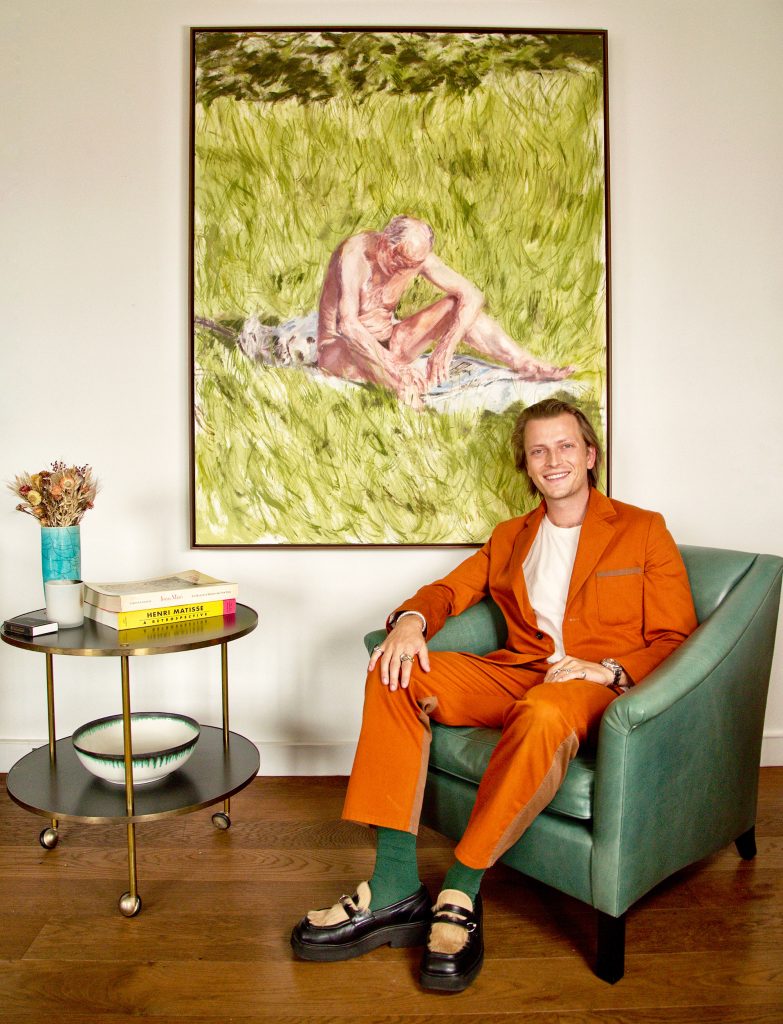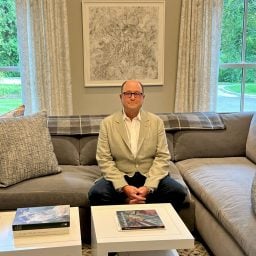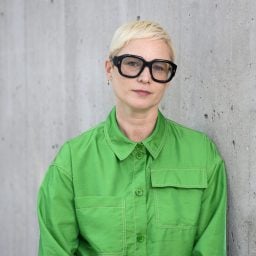Start-ups get their start in all sorts of ways. Palo Gallery was founded by Paul Henkel in 2018 as a brainy, roving temporary art space that popped up in various places around New York. Then, in 2022, the architect Annabelle Selldorf transformed a former jewelry store at 30 Bond Street into Palo’s first permanent exhibition space. For the gallery’s next show, quite a novel exhibition, Henkel will don his curator cap to explore the history of art collecting.
He could have likely asked his mother, the renowned collector and patron Katrin Bellinger, a specialist in Old Master drawings, for a tip or two. Opening September 8, “Maison Palo” will present Modern and contemporary art, furniture, and design objects corresponding to a type of collector—emerging art, Kunstkammer artifacts, and so on. The aim is to create a dialogue between works by younger artists—such as Kitty Rice, Keith Tolch, and Will Bruno—and established artists including Alexander Calder, Faith Ringgold, Dora Maar, and Georg Baselitz. Meanwhile, Selldorf’s furniture brand Vica will help set the tableau.
Henkel, formerly of Hauser & Wirth, has a collecting story that is just as rich. It began with curiosity, he told Artnet News. Now it’s more “fine-tuned.” He’s interested in artists who explore “cultural and historical touchpoints, where there is a clear through line to art history,” he explained, citing Barbara Walker’s illustrations of historical paintings. Other artists in his collection include Anish Kapoor, Alexej von Jawlensky, Frank Stella, Luc Tuymans, Henry Hudson, and Bosco Sodi—a blend of works he’s either purchased or inherited over the years from his collecting family.
We spoke with Henkel to see how he reconciles his collection of contemporary art with his adulation of art history.

Gert & Uwe Tobias, Untitled (2012). Courtesy of Paul Henkel.
What was your first purchase?
A Gert and Uwe Tobias watercolor collage. I made that purchase at Frieze London when I was 15 years old with some money my grandmother gave me to put in a savings account and let grow. Despite this advice, the allure and wonder of the artwork meant much more to me. I still have that work and it hangs in my childhood bedroom in London.
What was your most recent purchase?
I bought two works by Deanio X from his “Heart of War” series of 2022. Deanio X lifted sentences from Horace Pippin’s account of his time as a Harlem Hellfighter [an African American infantry unit] in World War I, the result being both haunting and mesmerizing. Deanio X’s multilayered and dense works on paper have long been favorites of mine. Moreover, he fits into my passion for artists who make clear historical or art historical references.
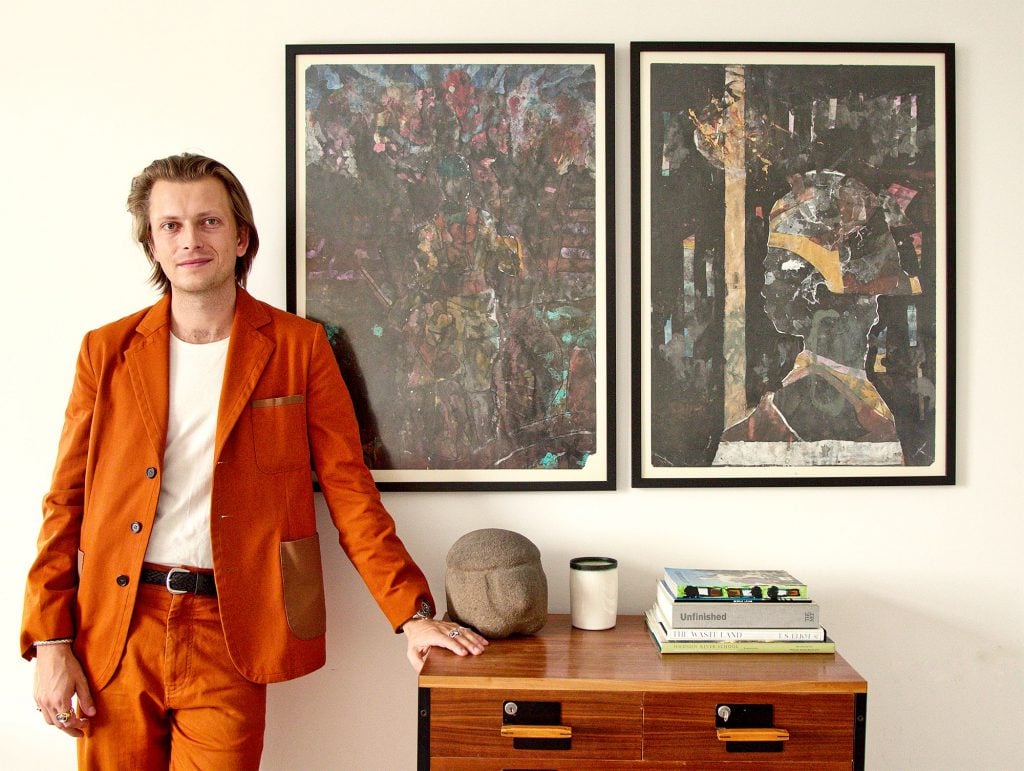
Hellfighter and Nightguard from Deanio X’s “Heart of War” series (2022). Photo: Lily Burgess. Courtesy of Paul Henkel.
Tell us about a favorite work in your collection.
I cannot say that I have favorites, but one work I really cherish is a watercolor diptych by Chris Ofili. I have a propinquity to works on paper, and Ofili is undoubtedly a contemporary watercolor master.
Another favorite is a recent acquisition from Will Bruno whose plein-air practice in the Southwest combines my academic history in German Romantics with my childhood in that part of the world. Moreover, Bruno has found a way to combine the grand history of landscape painting with personal and contemporary motifs.
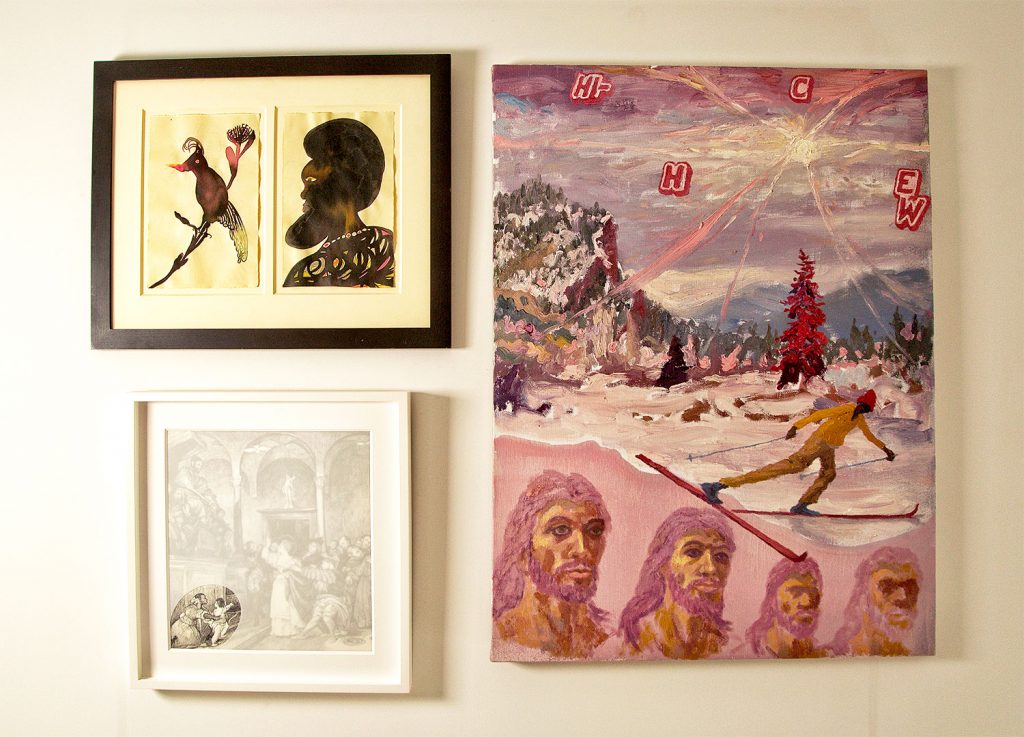
Clockwise from top left: Untitled by Chris Ofili, Joy in the Valley (2022) by Will Bruno, Marking the Moment 6 (2021) by Barbara Walker. Photo by Lily Burgess. Courtesy of Paul Henkel.
Which works or artists are you hoping to add to your collection this year?
I prefer to stay as flexible as possible when it comes to the future. That being said, I am looking forward to acquiring a Sagarika Sundaram from her upcoming solo show. Her textile work is both incredibly historic in its understanding of material and incredibly contemporary in its discovery of new frontiers in abstract art.
I am particularly excited to continue collecting work by Lorenzo Amos, whose raw painting style has felt like a breath of fresh air in a world of repetitive figuration. His eye, combined with his ever-evolving painting style, shows an authenticity that’s very hard to find these days.
Another would be Tancredi di Carcaci. I have long admired his ceramic work ever since he broke out into the London art scene. He has an incredible understanding of history and tradition but does not allow himself to be bogged down in the past. Rather he breathes fresh air and incredible skill into mediums and motifs that we have left to the past.
What is the most valuable work of art that you own?
I cannot take personal credit for the August Macke that recently came into my partial ownership. My grandmother, rest her soul, had restrained but impeccable taste. She bought this stunning small painting of a red donkey by Macke early on. Ever since I was a child, I would admire it when we went to visit her. Macke is one of my favorite painters of all time, and to have this memento of my grandmother and symbol of German Expressionism combined is something more valuable than any dollar amount. My brother and I co-own the artwork along with another painting. It means a great deal to us both and is a wonderful thing to be able to share.
Where do you buy art most frequently?
I have to admit that I buy the majority of my art from my own gallery. I believe in the artists I represent and really began dealing so as to support the artists I adore beyond my own collecting. Many of the artists I mentioned previously and others I love, like Julius Margulies or Rachel Wolf, are part of both the Palo Gallery program and my collection.
Outside of Palo Gallery, I love Europa’s program—in fact it’s where I first saw Will Bruno’s work. Another I really admire is Cristea Roberts, where I bought Barbara Walker’s Marking The Moment 6. That entire series blew me away in its reframing of the “Western” canon.
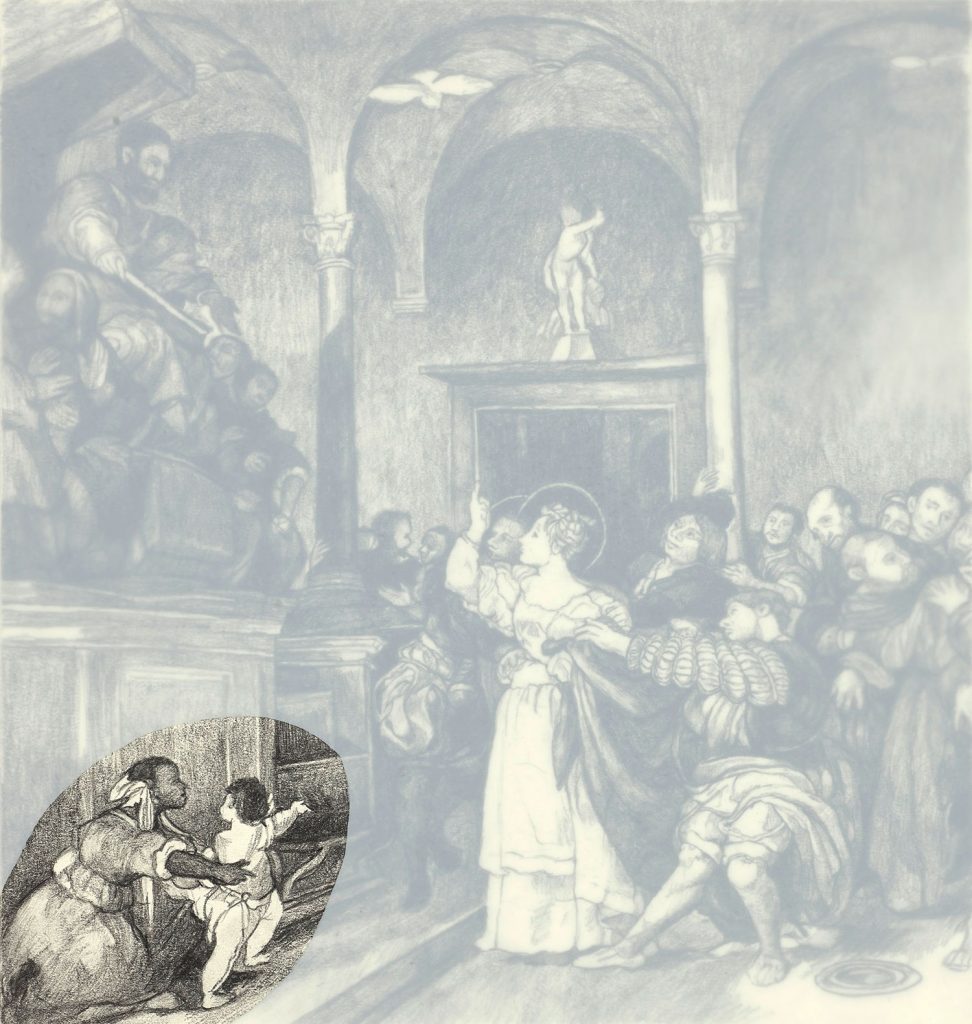
Barbara Walker’s Marking the Moment 6 (2021). Courtesy of Paul Henkel.
Is there a work you regret purchasing?
No. My only regrets come when I don’t have enough wall space. The result of which is an ever-rotating installation in our home.
What work do you have hanging above your sofa? What about in your bathroom?
As of this week I am hanging a new acquisition from Lorenzo Amos above the sofa. It was a painting he did while in London of an older man sunbathing in Hyde Park. It’s my favorite painting of his as it encapsulates both his understanding of art history in its technique and his ability to genuinely capture life in all its complexity. There is a certain level of studied and beautiful apathy in the painting that I cannot stop staring at.
The bathroom has another new acquisition coming in next week. It’s an ardent photograph of self-actualization by Delaney George. It’s a self-portrait of her half-nude covered in chain mail and blood while she rides a horse and brandishes a sword. I saw it at Frieze L.A. this year and could not stop thinking about it for months. I eventually returned to the gallery and was thrilled to find they still had an edition left.
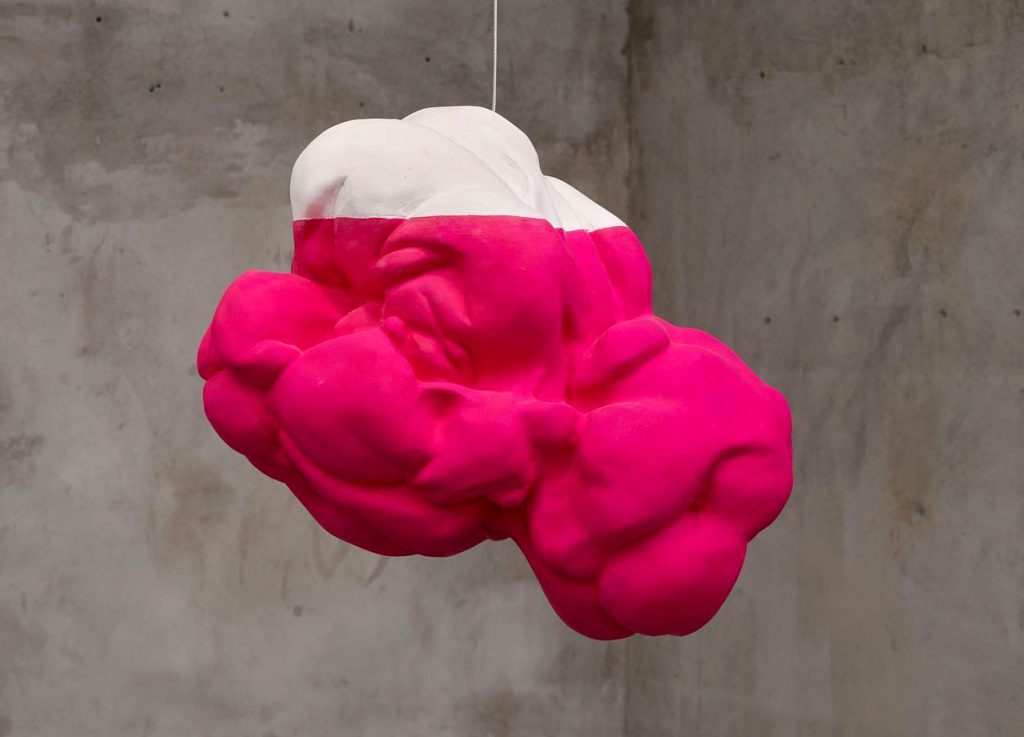
A work from Kim Faler’s “Double Bubble” series of 2022. Photo: Alan Wiener. Courtesy of Paul Henkel.
What is the most impractical work of art you own?
My knee-jerk answer would be to mention the light boxes by Julius Margulies (due to their need for Wi-Fi and an outlet) or Kim Faler’s “Double Bubble” sculptures.
However, it is ultimately the many prints and works on paper I collect. If there is a print edition, I have to hang the entire series as I refuse to have them discolor at different rates. Moreover, it is a general fear and aversion to light exposure. Not only is UV glass expensive, but I am always having to hide these works in backrooms. Every time I leave the house for a trip, I take all of those works off the wall and hide them somewhere dark.
Although I haven’t graduated to my mother’s level of paranoia. She is an Old Master collector and our home looked like a Malevich installation with each drawing covered by a white curtain—that is, unless we had company.
What work do you wish you had bought when you had the chance?
I could talk for hours about this subject, but the one that still sits with me is James Casebere’s Sea of Ice (2014). My master’s thesis orbits around Caspar David Freidrich and I was blown away by Casebere’s use of the Romantics’ visual language to address the issue of global warming in the photographic medium. The team at Templon were very patient with me, and I hope to acquire it one day in the future.
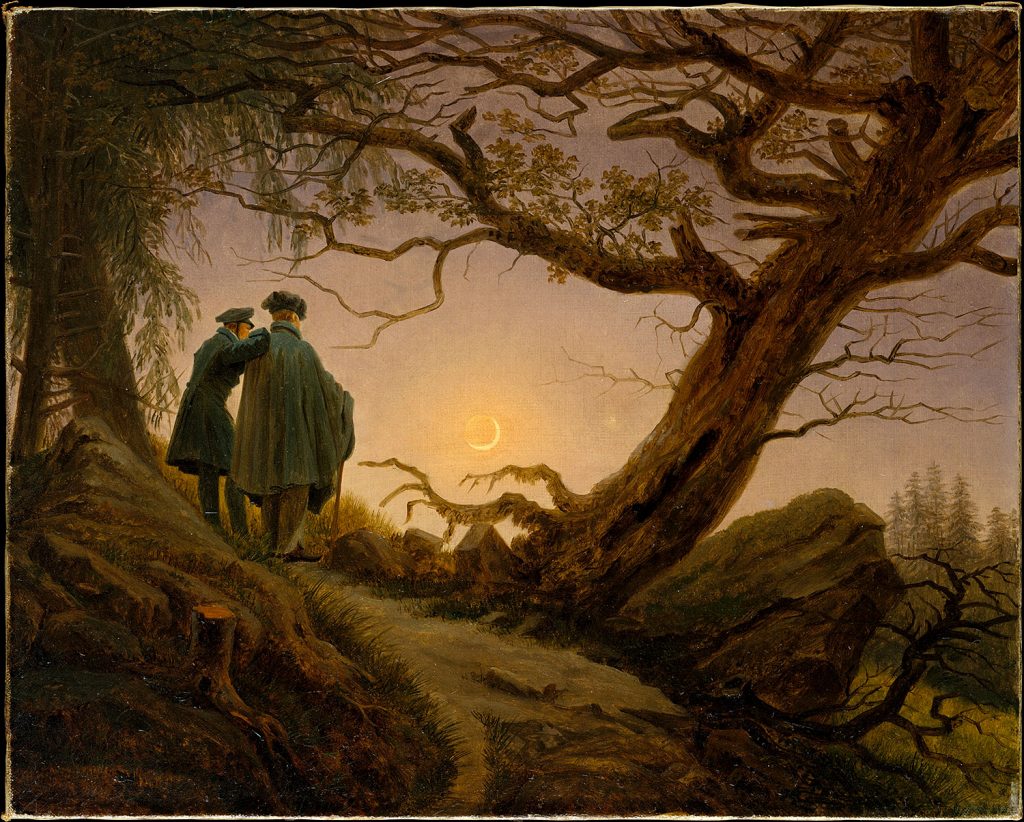
Caspar David Friedrich, Two Men Contemplating the Moon (ca. 1825–30). Courtesy of the Metropolitan Museum of Art, New York.
If you could steal one work of art without getting caught, what would it be?
Not that I encourage theft, but if I had a guarantee of no retribution, I would have to steal a Caspar David Friedrich. The Met’s Two Men Contemplating the Moon (ca. 1825–30) is one of many that I adore. There is not a lot of German Romantic art in the U.S., and I have become particularly attached to that work in my visits to the Met. Friedrich’s ability to imbue such drama and history in such a quiet and contemplative scene still astounds me to this day. It might seem strange as a contemporary dealer, but that work, like all of Friedrich’s, is not only an example of immense talent but moreover authenticity. No matter what mood I find myself in, I can find a response in that painting.
